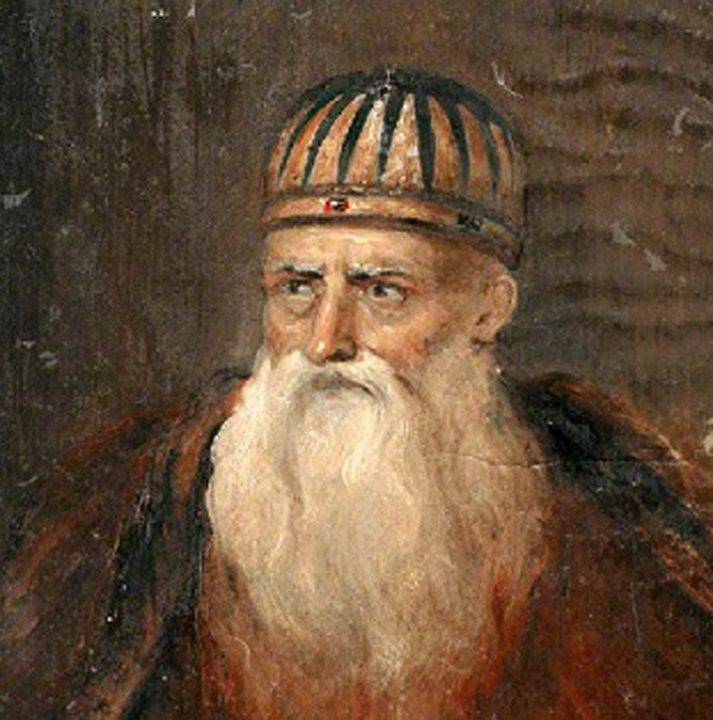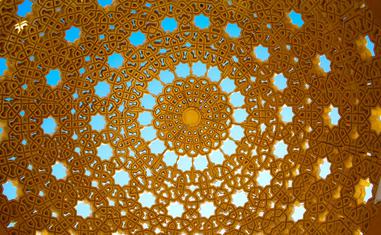The views expressed in our content reflect individual perspectives and do not represent the authoritative views of the Baha'i Faith.
Have you heard the Arabic word huri before? Perhaps you’ve seen it spelled houri, but the two spellings mean the same thing.
Let us begin this process of unveiling the huri of love by first explaining my personal understanding of what a huri is, because my understanding may not accord with other traditional definitions which interpret this symbolic term literally, as an allusion to a company of chaste maidens.
I have taken my definition from Baha’u’llah’s Book of Certitude, an appropriate source, since the first 116 pages of this work are devoted to unveiling the previously veiled verses of Matthew (24:29–31), a symbolic prophecy about the signs of the coming of the Son of Man.
Baha’u’llah explicates this as an allusion to the advent of Muhammad:
How many the huris of inner meaning that are as yet concealed within the chambers of divine wisdom! None hath yet approached them;—huris, ‘whom no man nor spirit hath touched before.’
Thus, if we define huri—literally “pure one”—as veiled, hidden or concealed meaning, as a deep mystery, then we realize that the capacity to understand the poetic verses of scripture, which Baha’u’llah alludes to in another passage in The Book of Certitude as “Brides of inner meaning”—then we can imagine that there are an infinite number of huris about love waiting to be unveiled.
RELATED: Walking the Valley of Love
But the focus of my concern is how the gap between the metaphysical and physical aspects of reality are bridged on both the macrocosmic and microcosmic levels, so that an authentic love relationship can take place between God and humankind.
We begin the process of unveiling this love relationship by approaching one of the most succinct statements of this relationship that can be discovered: the traditional Islamic hadith (a hadith is an Arabic word meaning “speech, account, report or narrative”) of the Hidden Treasure: “I was a Hidden Treasure. I wished to be made known, and thus I called creation into being in order that I might be known.”
Baha’u’llah, the prophet and founder of the Baha’i Faith, asked his son Abdu’l-Baha to write a commentary on this hadith of the Hidden Treasure for a Sufi mystic named Ali Shawkat Pasha. Abdu’l-Baha did so, and his mystical commentary makes it clear that this hadith is not merely a casual acknowledgement of the Creator’s existence. Instead, Abdu’l-Baha pointed out, it provides sufficient knowledge that we choose to participate in a love relationship with the Creator.

Thus, if the Creator merely wished to be recognized as an extant being of omnipotence, He could simply reveal Himself in some spectacular fashion, so that no one could possibly deny His existence or His heretofore hidden treasures. He could simply utter “‘Be!’ and it is”, and we would instantly exist and instantaneously acknowledge His supremacy and power—the way Job did when God spoke to him from the whirlwind. We would all become immediately transformed, like little Billy Batson who, by simply uttering Shazam! is transformed into Captain Marvel.
But here we are 5.9 billion years or so into the evolution of this one planet, and so far we have not even established peace among our species.
Baha’u’llah clearly acknowledged, in a tablet included in the book Summons of the Lord of Hosts, that the Creator has the power to make this a reality very simply with a single word:
Within the treasury of Our Wisdom there lieth unrevealed a knowledge, one word of which, if we chose to divulge it to mankind, would cause every human being to recognize the Manifestation of God and to acknowledge His omniscience, would enable every one to discover the secrets of all the sciences, and to attain so high a station as to find himself wholly independent of all past and future learning.
Indeed, creationists theorize that an instantaneous and direct process is precisely what occurred. Six thousand years ago, they maintain, God created a man and a woman and thus the Earth became populated and human history began.
Ironically, in spite of the ostensible warfare between science and religion, most astrophysicists are in accord with this perception of creation as having a point of beginning in time, only with a slight increase in duration: from six thousand years to sixteen billion years. For while astrophysicists posit many theories about whether or not the big bang caused the beginning of time, and some believe the beginning of space as well, few agree as to what caused this event, since they believe that nothing preceded it.
It’s a mystery, a huri.
Let me give you a couple of examples of the strange alliances we now find, and the strange corners thinkers of every sort have thought themselves into. The fact is that scientific study—indeed virtually all academic study—is now so segregated into discrete and often isolated areas that larger questions are treated more as a nuisance, as a source of bemusement to share on a coffee break rather than as issues of critical concern.
A personal experience may demonstrate my point. A while ago I went to the lecture by 2004 Nobel Prize-winning physicist and MIT professor Frank Wilczek, in which he spoke about his exquisite work in quantum chromodynamics. During the course of his presentation, Wilczek displayed a photograph of two particles crashing into each other at the CERN accelerator in Geneva. He then observed that this image might well resemble what the big bang looked like.
Having completed my book only the week before, and having posited and proved to my personal satisfaction the “big bang” theory to be logically untenable, even ludicrous, I asked a question during the Q and A that followed: If it required immense energy and planning to get these two particles to crash into each other and produce this effect, why would there not be the same sort of sufficient cause for a big bang—which would thus make the big bang an effect rather than a sufficient cause for physical reality? According to Stephen Hawking, this big bang caused the beginning of time itself—and, some theorists say, the beginning of space itself. After all, if space already existed, then didn’t something precede the big bang?
His answer was a sort of gestalt sidestep, an anecdote about Napoleon who, upon perusing Laplace’s great work, Mechanique Celeste, commented, “It appears to me that there is no mention of God in your system of the universe.” Laplace laughed, slapped the emperor on the back and replied, “You tiny emperor person you, I had no need of that hypothesis to complete my work.”
This story was Professor Wilczek’s way of explaining that he did not particularly care whether or not something preceded the big bang, because that theory had nothing to do with his own remarkable ability to create a formula for predicting where particulates would end up after splitting a quark into the constituent components of a quark, an anti-quark, and a “gluon”—physicists being, by nature, very poetic. Indeed, Wilczek gave much the same answer to someone who asked about superstring theory.
This attitude or perspective—that scientists can work in isolation on discrete parts of reality, even as medical specialists work on ever more indiscrete parts of our bodies, often without having the slightest idea whether or not they have made us healthier as an entire human being—is the precise opposite of what advocates of religion or philosophical students of reality desire to accomplish. Indeed, this anecdote underscores what my brother William S. Hatcher observed in his work Minimalism—namely, that science possesses (or thinks it possesses) very exact knowledge about very discrete portions of reality, which it thus studies as a modular system—whereas philosophy and religion possess (or think they possess) very inexact knowledge about the entirety of reality, which they study as a holographic system. Stated even more succinctly, science offers a bottom-up view of reality, while philosophy and religion offer a top-down view.
RELATED: Walking a Mystical Path through The Seven Valleys
Here in these essays and in my books as well, my objective is to offer a synthesized or integrative view of these ostensibly opposing but potentially complementary approaches to reality.
So what would be wrong with this cosmogonist myth of instant creation, whether from a fundamentalist creationist perspective, or from a scientific theory of a big bang? We would be created already in love with God, all spiritual and smiling at one another with happy families living in nice neighborhoods! There would be no backbiting, no war, and all TV shows about crime scene investigation would be entirely fictional. We would all eat organic food, have pure water and clean air. The problem is that, besides being dull and bored, we would exist like amnesiacs waking into a reality without a conscious history, without the foggiest idea of how we became so nice, and certainly without any sense of having participated in this event. Consequently, we would not only be unable to appreciate the value of what we had, since, having known nothing else, we would be totally at a loss as to how to proceed beyond this point. Consequently, we would have no experience or training to provide us with the tools necessary for further development.
If we return to the desire of the Creator not merely to be known, but to create a being capable of a loving relationship, we realize that an instantaneous creation does not work, and for a number of reasons. First, authentic love requires a number of essential conditions which an instantaneous act could never provide. But before we examine the properties of such a love relationship, let us briefly examine the love relationship as it is commonly perceived, so we can then see that the methodology employed by the Creator is not only useful, but essential.
This series of essays is adapted from John Hatcher’s address to the 2005 Association for Baha’i Studies Conference titled The Huri of Love, which comprised the 23rd Hasan M. Balyuzi Memorial Lecture.
You May Also Like
Comments

















Sheldon Ramer